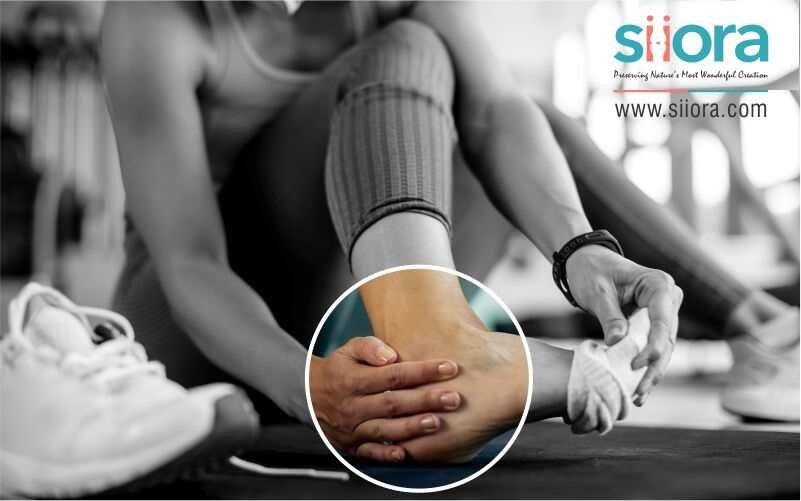Orthopedic injuries are common and affect almost everyone at least once in their lifetime. If we talk about Orthopedic Injuries in athletes, they are more prone to getting injured and experiencing harmful events that affect their musculoskeletal system. However, a little attention and simple efforts from athletes can significantly minimize the risk of orthopedic injuries. This is what we will be discussing in the post. Before we go ahead, let us have a look at what orthopedic injuries are.
What Are Orthopedic Injuries?
Orthopedic injuries refer to any damage or trauma that affects the musculoskeletal system, which includes the bones, joints, ligaments, tendons, muscles, and other supporting structures. These injuries can occur due to various reasons, such as accidents, sports-related incidents, falls, repetitive motions, or degenerative conditions. Orthopedic injuries can range from minor sprains and strains to more severe fractures, dislocations, and ligament tears.
Fractures are among the most common orthopedic injuries. They occur when the integrity of a bone is compromised, resulting in a crack or complete break. Fractures can be classified as closed (simple) fractures, where the bone remains within the skin, or open (compound) fractures, where the bone breaks through the skin. Fractures can be further categorized based on the pattern of the break, such as transverse, oblique, or comminuted fractures.
Ligament tears are common in sports injuries and accidents. When a ligament is stretched beyond its normal range of motion or experiences a sudden force, it can tear partially or completely, resulting in pain, instability, and limited joint movement.
Other orthopedic injuries include sprains, which involve the stretching or tearing of ligaments; strains, which involve the stretching or tearing of muscles or tendons; and repetitive motion injuries like tendonitis and bursitis, which occur due to overuse or repetitive stress on a specific joint or tendon.
How to Prevent Orthopedic Injuries in Athletes?
Orthopedic injuries are a common concern in the world of sports and athletics, often resulting in significant setbacks for athletes. The prevention of such injuries is crucial for athletes to maintain their performance, achieve their goals, and safeguard their long-term health. By implementing effective strategies, athletes can reduce the risk of injuries and enhance their overall well-being. This article explores key measures and practices that can help prevent orthopedic injuries in athletes.
Pre-Participation Medical Evaluations
Before engaging in any sports activity, athletes should undergo a thorough pre-participation medical evaluation. This assessment should be conducted by qualified healthcare professionals who can identify any pre-existing conditions, muscle imbalances, or structural issues that may increase the risk of injury. These evaluations can help develop personalized training programs and implement necessary interventions to address specific concerns.
Appropriate Warm-up and Cool-down Routines
Athletes should always incorporate proper warm-up and cool-down routines into their training sessions and competitions. A dynamic warm-up routine prepares the body for physical activity by increasing blood flow to the muscles, improving flexibility, and activating the nervous system. Similarly, a cool-down routine helps the body transition from intense activity to a resting state, reducing the risk of muscle stiffness and soreness.
Progressive Training Programs
Athletes should follow progressive training programs that gradually increase intensity, duration, and complexity. This approach allows the body to adapt to increased demands and reduces the likelihood of overuse injuries. Incorporating variety into training sessions, such as cross-training and rest days, further promotes balanced muscle development and mitigates the risk of repetitive stress injuries.
Proper Technique and Form
Mastering proper technique and form is essential to prevent orthopedic injuries. Athletes should work closely with qualified coaches or trainers who can provide guidance on correct body mechanics and ensure that movements are executed with precision. Learning to maintain optimal posture and alignment during training and competition reduces the strain on joints and minimizes the risk of acute injuries.
Strength and Conditioning
Developing a well-rounded strength and conditioning program is paramount for injury prevention. Strengthening muscles around vulnerable joints helps improve stability and reduce the risk of sprains, strains, and tears. Additionally, incorporating exercises that target core stability, balance, and proprioception enhances overall body control and reduces the risk of falls and traumatic injuries.
Adequate Rest and Recovery
Rest and recovery are important components of any training program. Athletes should prioritize sufficient sleep, as it plays a vital role in tissue repair, hormone regulation, and overall recovery. Additionally, incorporating active recovery techniques such as stretching, foam rolling, and low-impact activities can help reduce muscle soreness, prevent overuse injuries, and promote optimal performance.
Proper Nutrition and Hydration
Maintaining a well-balanced diet and staying adequately hydrated are key factors in injury prevention. Proper nutrition supports muscle recovery, strengthens the immune system, and provides essential nutrients for overall musculoskeletal health. Adequate hydration optimizes joint lubrication, aids in temperature regulation, and promotes efficient oxygen and nutrient delivery to the tissues.
Injury Awareness and Early Intervention
Athletes should be aware of the signs and symptoms of potential injuries. Any discomfort, pain, or abnormalities should be promptly addressed by healthcare professionals specializing in sports medicine. Early intervention and appropriate rehabilitation can prevent minor issues from escalating into more severe conditions, minimizing downtime and promoting a quicker return to sport.

What Are the Common Orthopedic Injuries in Athletes?
Sprains
Sprains occur when ligaments, the bands of tissue that connect bones to one another, are stretched or torn. Ankle sprains are particularly common in sports that involve jumping, cutting, or quick changes in direction, such as basketball or soccer. Sprains can also affect other joints, such as the knee or wrist. Proper warm-up, strengthening exercises, and using supportive braces or taping techniques can help prevent sprains.
Strains
Muscle strains involve the stretching or tearing of muscle fibers or tendons. They often occur due to sudden, forceful movements or overexertion. Hamstring strains are prevalent among athletes, especially those involved in running or sports that require explosive movements. Adequate warm-up, gradual progression in training intensity, and maintaining flexibility are crucial for preventing strains.
Fractures
Fractures, or broken bones, can occur from high-impact collisions, falls, or repetitive stress on the bone. Sports like football, rugby, or skiing carry a higher risk of fractures. Stress fractures, caused by repetitive loading on a bone over time, are common in endurance athletes. Protective gear, proper technique, and strength training can help reduce the risk of fractures.
Dislocations
Joint dislocations are when the bones forming the joint move out of their normal anatomy. Athletes involved in contact sports, such as football or wrestling, are at higher risk. Shoulder dislocations are particularly common. Strengthening the muscles around the joint, maintaining good body mechanics, and using appropriate protective equipment can help prevent dislocations.
Tendinitis
Tendinitis refers to inflammation or irritation of a tendon, usually caused by repetitive motion or overuse. Athletes involved in activities like running, tennis, or baseball can develop tendinitis in areas such as the Achilles tendon, rotator cuff, or patellar tendon. Proper conditioning, gradual progression in training, and adequate rest can help prevent tendinitis.
Meniscal Tears
The meniscus is a piece of cartilage in the knee joint that helps with shock absorption and stability. Athletes involved in sports that require pivoting or sudden changes in direction, such as soccer or basketball, are prone to meniscal tears. Proper landing techniques, maintaining leg strength and stability, and avoiding excessive twisting motions can reduce the risk of these injuries.
Stress Fractures
Stress fractures are small cracks or breaks in bones that occur due to repetitive loading or overuse. They are common in athletes who participate in high-impact sports like running or jumping. Gradual progression in training, appropriate footwear, and adequate nutrition can help prevent stress fractures.
Siora Surgicals Pvt. Ltd. is one of the oldest orthopedic device manufacturers in India having experience of over 3 decades. The company manufactures a huge range of trauma implants and instruments using medical-grade stainless steel and titanium. All the implants are manufactured under controlled conditions in Siora’s production facility established in RAI District, Sonepat, Haryana. Siora Surgicals is also known to be a trustworthy OEM/contract manufacturing service provider across the globe.








